August 16, 2025
The Weekend Read✨The ‘Perfect’ Body Doesn’t Exist, But Your Perfect Style Does!
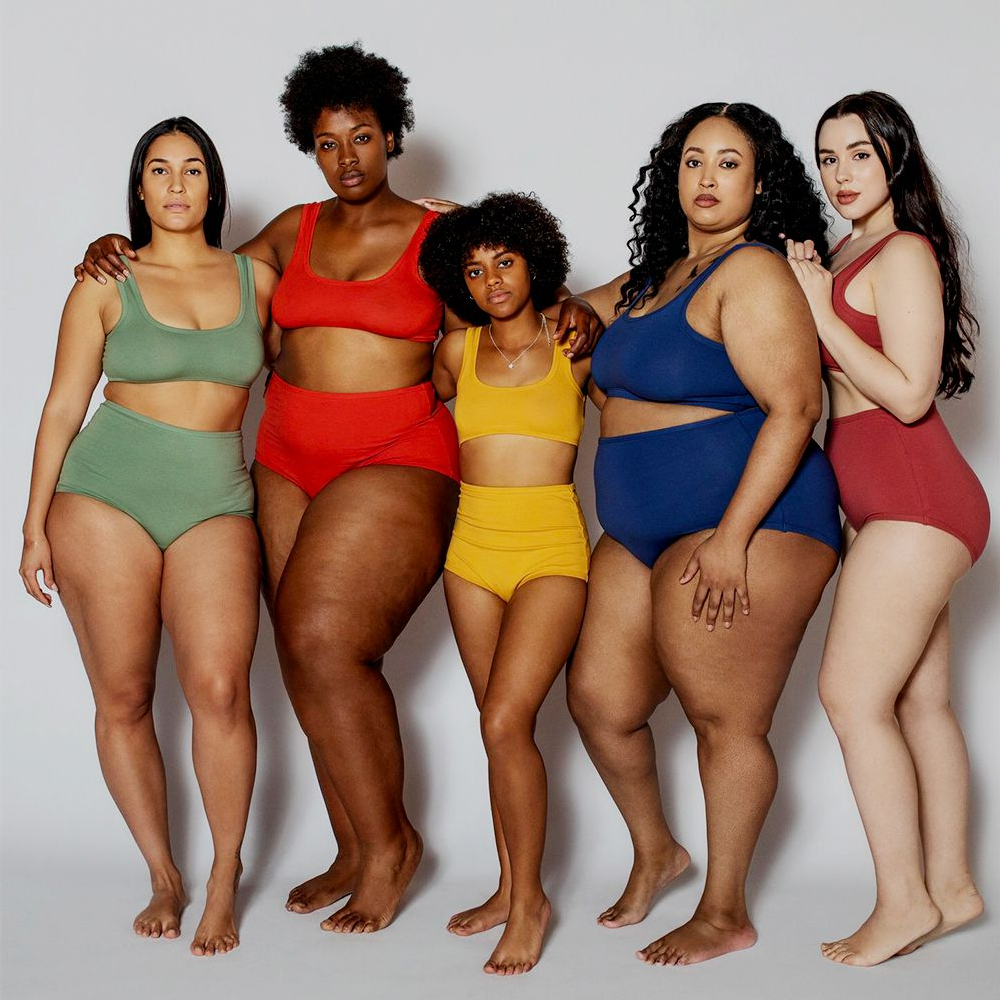
Hello!
At some point, most of us have stood in front of the mirror and sighed: If only I had….longer legs, a smaller waist, a different bust size, narrower feet, slimmer calves, a more 'balanced' shape. It’s an almost universal moment. But here’s the truth that can set you free: there is no such thing as the perfect body. There never has been and there never will be.
What we call 'perfection' is simply a beauty standard that someone else has made up, a moving target shaped by magazines, catwalks, filters, and trends. And the frustrating part? Even if you achieved the 'ideal' for today, it would be out of fashion in a few years time.
So instead of chasing an ever-changing fantasy, it’s time to learn how to dress the body you have now, in a way that works with your proportions, personality, and lifestyle, and yes, that means playing with colour and style too. But first, let’s step back in time...
A Moving Target: The History of the ‘Perfect’ Body
If you feel you’re constantly failing to live up to the 'ideal' body image, here’s some insightful perspective: the goalposts have been moving for centuries.
The Renaissance (14th–17th century)
Artists like Botticelli and Rubens painted women with rounded stomachs, full hips, and soft arms. Flesh represented wealth — the more you had, the more it suggested prosperity, fertility, and good health. The modern-day diet industry would have had a very poor time in 1500s Florence.
The Georgian Era (18th century)
Wide pannier skirts created enormous hips, paired with tightly corseted waists and uplifted bosoms. Pale skin was prized, a sign you didn’t work outdoors. This was fashion as architecture: the body was shaped into a silhouette by layers of structure.
The Victorian Era (19th century)
The hourglass dominated, with corsets cinching waists to astonishingly small diameters. Waist training was not a TikTok trend, it was daily life. Hips and busts were exaggerated with layers of fabric, and women faced the dangerous health effects of compression garments.
The 1920s
A seismic shift in body image where women rejected the previous looks of the hourglass figure, introduced the flapper figure which was slim, androgynous and boyish. Corsets were out, bandeaux and loose dresses were in. Curves were minimised, hair was cut short, and bodies were about youth and energy rather than maturity.
The 1950s
After wartime rationing, curves returned in full force. Think Marilyn Monroe, Sophia Loren and Elizabeth Taylor. Soft waists, ample busts and curvy hips were celebrated. Dior’s 'New Look' embraced femininity in full skirts and nipped-in waists.
The 1990s
'Heroin chic' entered the zeitgeist championing a disturbingly thin, pale, hollow-cheeked look that dominated runways and advertising. This was perhaps the most extreme narrowing of beauty ideals in recent history, and its damage is still felt today.
The 2020s to 2025
Today, we live in a world of contradictions. Diversity in marketing is growing. We see models of all sizes, skin tones and abilities, but the rise of hyper-filtered social media has created a new, digitally engineered sense of perfection. Many influencers’ faces and bodies simply don’t exist in reality due to over filtering.
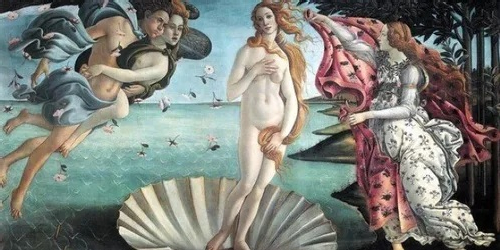
The Modern Mythmakers
In 2025, our image of beauty is built from a number of influences:
Social media: Instagram, TikTok, and YouTube produce endless images of 'perfect' bodies, often digitally altered. The algorithm rewards visual symmetry, clear skin, and certain proportions, regardless of whether they’re natural or not.
- The Fashion industry: Catwalks still lean towards models with extreme body types, even as high-street brands become more size-inclusive.
- Advertising and magazines: Retouching photos remains the industry standard: smoothing, slimming, and brightening until reality is erased.
- Celebrities and influencers: Body reveal moments are treated like events, with weight loss or gain dissected in headlines and in the comment sections.
The message is clear: perfection is aspirational, but also unattainable. The perfect body isn’t just unrealistic, it’s often not even real!
How House of Colour is Changing the Conversation
One of the most liberating shifts you can make is to stop thinking about your problem areas, and start thinking about your personal characteristics. At House of Colour, that’s what we encourage you to do. By using colours that flatter and shapes that honour your body it is easy to distract instead of hide.
Wearing the right colours for your natural skin tone won't just flatter your face, they can balance your body proportions. Wearing a bright, eye-catching scarf can draw attention up to your face and away from your tummy. Wear the wrong dark, heavy shade over a fuller area and you might unintentionally make it look larger.
It's the same when you dress your body. Understanding the best shapes and styles for your body means you can:
- Dress to balance your body proportions.
- Style yourself to emphasise what you love and distract from what you don't.
- Dress in a way that feels authentically you inside and out.
When you combine colour and style you stop dressing to hide and start dressing to shine.
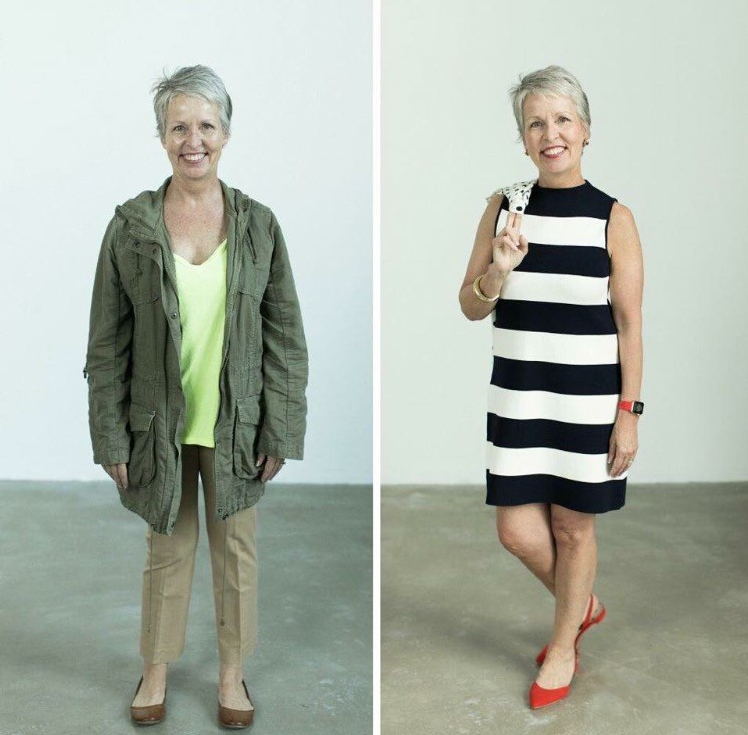
My Story: From Oversized Black to Balanced and Bold
I’m Judi Prue, co-author of The Weekend Read, and I know body issues first hand. I’m a plus-size woman, currently a size 20, though I’ve fluctuated over the years. I also live with lymphoedema, a genetic condition that causes my feet and legs to swell.
Before starting my House of Colour journey, I hid in oversized black clothes, hoping to disappear. I thought I was covering up my worst bits: my tummy, my legs, my bottom, but in reality, I was making myself look larger and older, and I certainly felt invisible.
Everything changed when I discovered my Spring colour palette and understood my hourglass body shape. I learnt how to create balance, draw the eye away from areas I didn’t want to highlight, and used colour to lift my skin rather than drain it. I stopped drowning in black and started wearing clothes that fitted me, not the me I thought I should be.
My body hasn’t changed, but my confidence has. I still have the same lumps and bumps, but I dress them differently. I’ve learned to honour the body I was born with and make the very best of it. And the ripple effect? I stand taller, smile more and I’m no longer afraid to be seen.
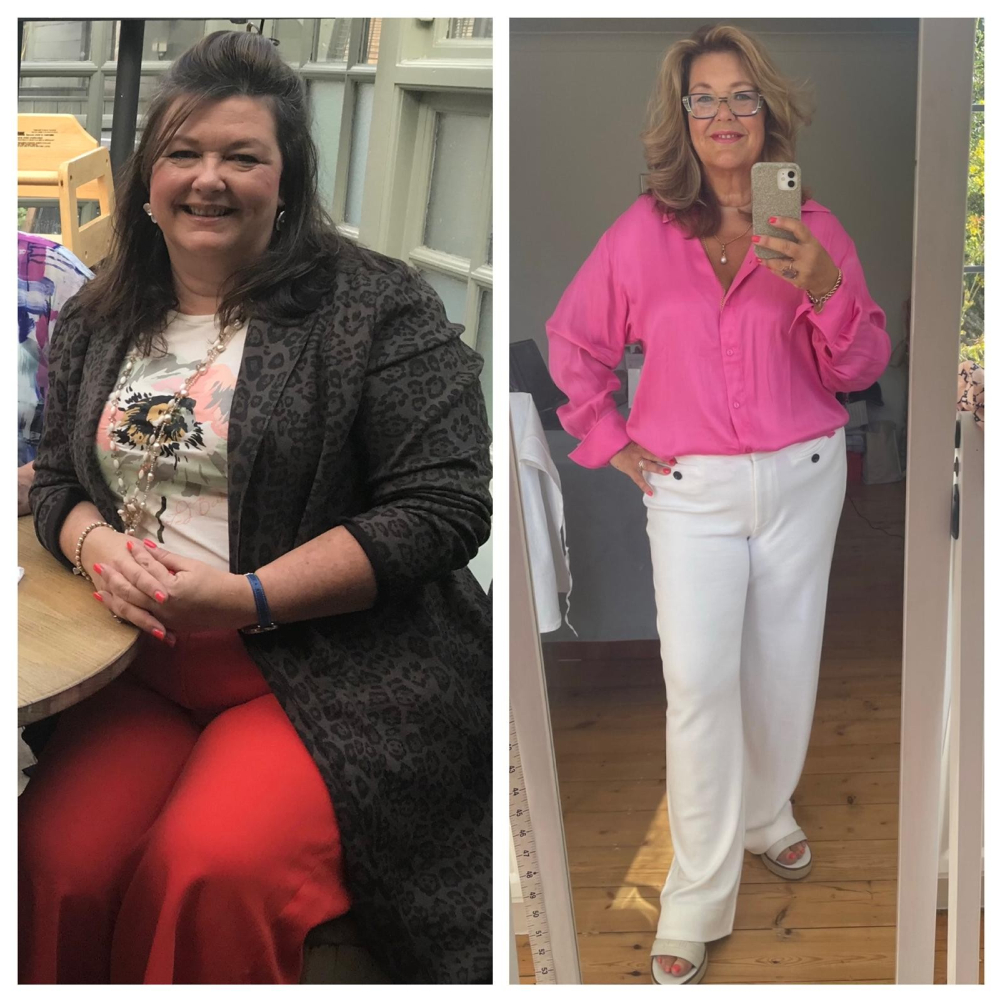
Reframing Common Body Issues and Dressing for Joy
Plus Size
Forget the idea that you need to be smaller to look stylish. Fit is your best friend. Clothes that skim, rather than cling or swamp, are instantly more flattering. Add vertical interest like open jackets, long necklaces and column silhouettes to lengthen your line.
Colour tip: Wearing your strongest colours near your face will draw attention upward. Keep darker, matte fabrics for areas you want to recede, and brighter or lighter colours for the areas you want to celebrate.
Mid Size
Often overlooked by fashion marketing, the mid-size woman benefits from clothes that work with her natural curves. Stretch fabrics with structure (not floppy jersey) keep their shape throughout the day.
Colour tip: Break up your outfit into thirds rather than halves. A mid-length cardigan in a tonal colour can help balance proportions beautifully.
Petite Frame
Petite women are told to look taller, but why not just look balanced instead? Monochrome dressing or tonal layers create unbroken lines, while cropped jackets and high-waisted trousers elongate the legs.
Colour tip: Avoid overwhelming prints. Smaller, well-placed patterns will sit better on your frame and keep the focus on you.
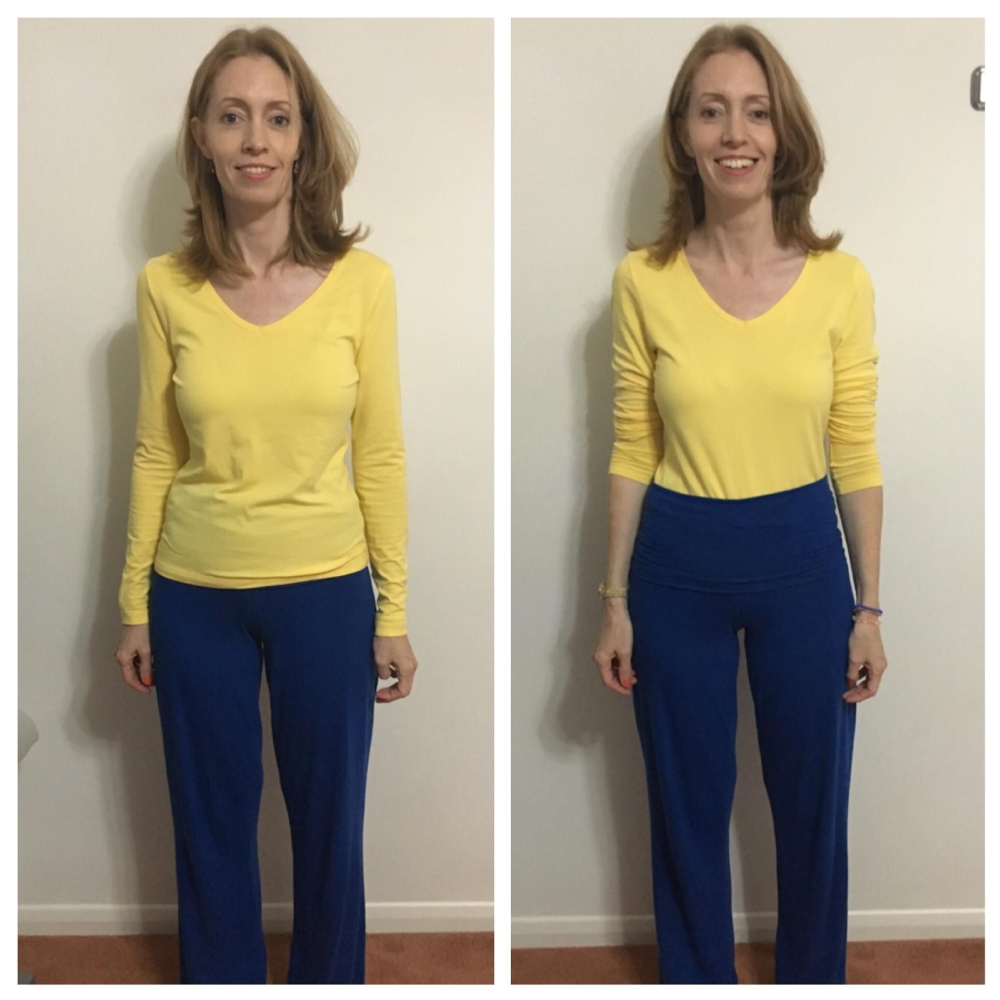
Long Legs / Short Legs
For long legs, add visual weight on the lower half using wide hems, midi skirts and boots that finish on the calf. For short legs, keep hems higher and shoes low-vamp (showing more of the foot).
Colour tip: Matching your shoe to your leg tone or trouser colour creates instant length.
Big Busted
Big busts are beautiful but can throw your proportions out. Soft V-necks, wrap styles and structured jackets create balance. Avoid high necks as they will make you look bulky.
Colour tip: Lighter colours on the bottom half and darker colours on top can help balance your silhouette if your bust dominates.
Small Busted
If you have a smaller bust, you can add details like ruffles, pleats and embellishments without overwhelming your frame. High necks work well, as do bralettes and halternecks.
Colour tip: Wear bold patterns or lighter colours on your top half to add visual fullness.
Feet — Big, Small, Wide or Narrow
The right shoe makes all the difference. A bold shoe in a colour from your season can make your feet a style feature rather than something to hide. For wide feet, avoid narrow points that pinch; for small feet, avoid overly chunky soles that can overwhelm your proportions.
Calves — Big or Small
Boot fit can be tricky, but it’s solvable. Wide-calf boots will balance fuller calves, while slouchy styles add volume to slimmer calves. If you have wider calves, wear your hemlines either above or below your calf, not on it.
Waist — Narrow or Not Defined
A defined waist can be emphasised with belts, peplum tops and wrap dresses. If you don’t have a defined waist, column dressing or shift shapes create flow and comfort without clinging.
Colour tip: By wearing different colours on your top and bottom, you create a visual break at the waist which will give you the illusion of curves.
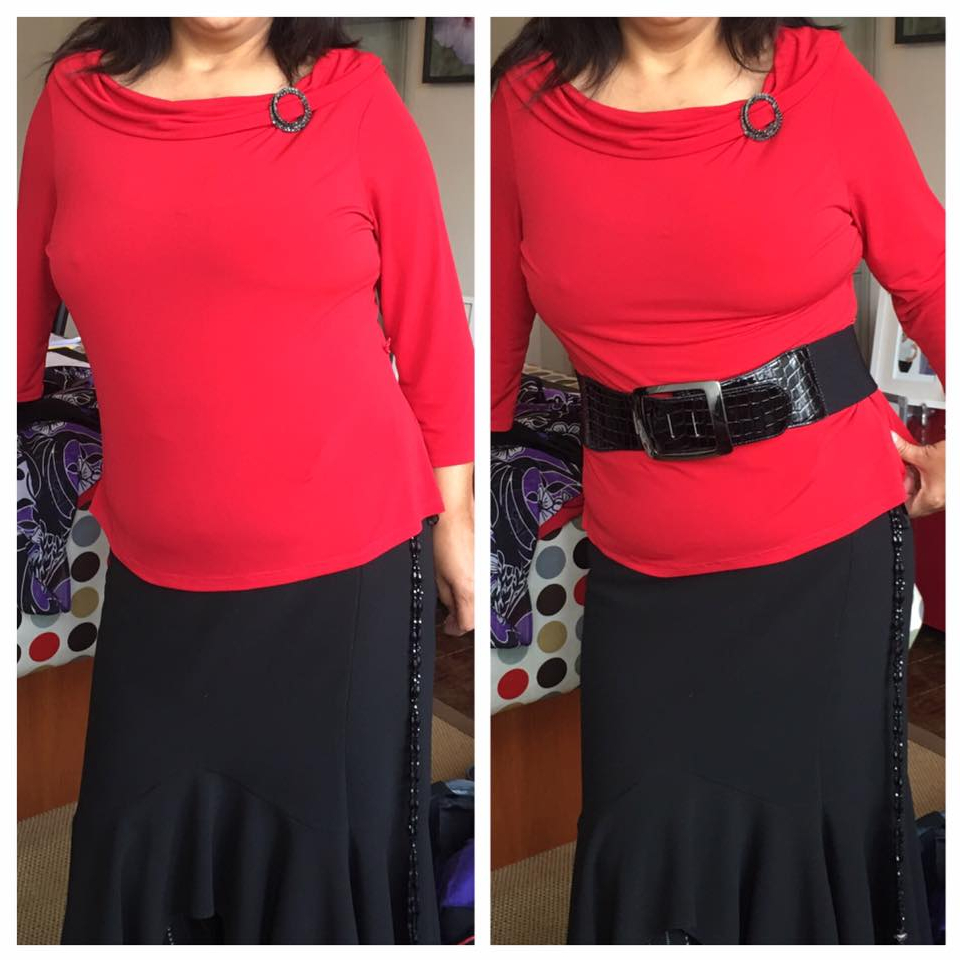
The Problem with Applauding Weight Loss
We still live in a culture where 'You’ve lost weight!' is offered as a universal compliment, yet it can be the result of illness, grief, stress, or disordered eating.
Imagine replacing it with 'You look well', 'You seem energised', or 'That colour really lights you up'. Shifting the focus from size to vitality is a kindness we could all practice more.
Marketing in 2025 — The Good, The Bad and The Tokenism
This year, a major London Fashion Week brand faced backlash for sending AI-generated models down its virtual runway, all of them ultra-thin, white and flawless. Here are a few brands who are trying to change the narrative:
- John Lewis has run campaigns with models from size 6 to 24.
- Adidas now includes para-athletes, older models, and a range of body shapes in sportswear ads.
- M&S showcases lingerie on different shapes and skin tones.
The change is real, but tokenism still lingers: one 'diverse' model in a sea of sample sizes is not true representation.
Our Top 10 Body Positive Style Tips
- There is no 'perfect' body, only bodies in different seasons of life.
- Stop comparing your real self to someone else’s edited self.
- Buy clothes for the body you have today.
- Choose colours and shapes that make you feel powerful.
- Curate your social media by unfollowing accounts that make you feel less than.
- Give compliments about strength, style, and spirit.
- Let go of your 'goal weight wardrobe' and wear your best clothes now.
- Learn how beauty ideals have shifted — it’s just fashion, not fact.
- Spend your money where your body is welcomed.
- Speak to yourself with the kindness you reserve for your best friend.
Final Thoughts: Body Trends vs The Timeless Body
The perfect body? It’s the one you’re living in right now — the one that laughs, carries, walks, dances, and experiences life. Every so-called flaw is simply a feature. The greatest style statement you can make is to dress your body with joy, to reject comparison, and to know that perfection is a fashion trend, and that your body is timeless.
Enjoy your weekend! In next week's The Weekend Read, we will be looking at how to get the most out of buying and selling pre-loved fashion.
Best wishes,
Jenny & Judi xx

Jenny Goldsmith
Celebrator of Individuality
Curator of Confidence
Tel: 07986 062460
e: jenny.goldsmith@houseofcolour.co.uk
w: www.houseofcolour.co.uk/jennygoldsmith
Client code: GOLDSMIT for 30% of all webshop prices
Webshop: shop.houseofcolour.co.uk/shop

 Jenny Goldsmith | Read in about 11 minutes
Jenny Goldsmith | Read in about 11 minutes